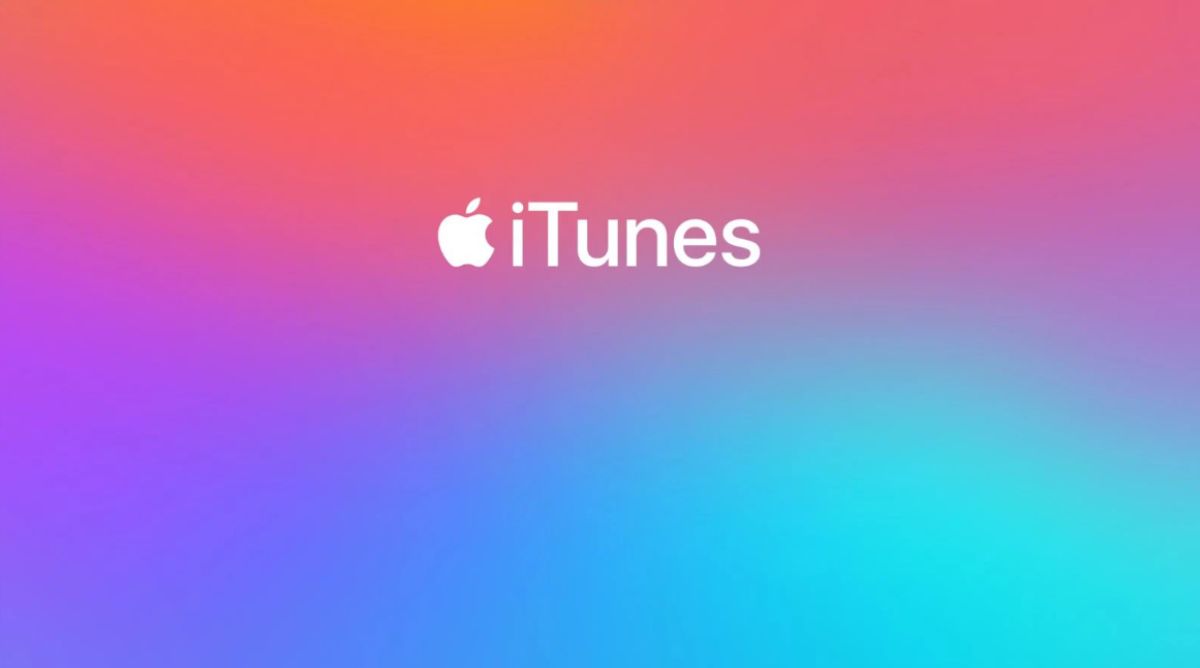Exploring iTunes for Windows: A Comprehensive Guide
iTunes, the renowned multimedia software developed by Apple Inc., has long been a cornerstone for music enthusiasts, video aficionados, and podcast lovers. Originally crafted with Mac users in mind, iTunes has successfully expanded its reach to the Windows platform, delivering a robust and seamless experience for those operating within the Microsoft ecosystem. This 1000-word article dives deep into the world of iTunes for Windows, exploring its features, highlighting its benefits, and guiding you through the process of downloading and setting it up on your computer. Whether you’re a seasoned iTunes user or a newcomer considering this powerful tool, this guide will equip you with everything you need to know.
What is iTunes?
At its core, iTunes is a versatile media management application that allows users to organize, play, and sync a wide variety of digital content. From music and movies to TV shows, podcasts, and audiobooks, iTunes serves as a one-stop hub for your multimedia needs. Launched in 2001, it quickly became synonymous with Apple’s ecosystem, particularly due to its integration with devices like the iPod, iPhone, and iPad. While its role on macOS has evolved in recent years—with Apple splitting its functionality into specialized apps like Apple Music and Apple Podcasts—iTunes remains a unified, all-in-one solution for Windows users, offering a familiar experience across platforms.
For Windows users, iTunes brings the same organizational prowess and access to Apple’s vast digital ecosystem, albeit with some adaptations to suit the operating system. Whether you’re looking to manage your music library, sync content to your iPhone, or explore the iTunes Store, this software delivers a polished experience tailored to the Windows environment.
Differences Between iTunes for Windows and Mac
While iTunes shares the same foundational DNA across platforms, there are subtle yet noteworthy differences between the Windows and Mac versions. These distinctions reflect the unique characteristics of each operating system and influence how users interact with the software.
- User Interface: On Windows, iTunes adopts a design that aligns with the visual language of Microsoft’s operating system. The interface incorporates elements like Windows-style menus and dialog boxes, ensuring it feels at home alongside other native applications. While the layout remains familiar to Mac users, the aesthetic adjustments enhance usability within the Windows ecosystem.
- System Integration: On macOS, iTunes benefits from tight integration with Apple’s broader ecosystem, including iCloud, Apple Music, and AirPlay. For example, AirPlay—a feature that streams content to compatible devices—works effortlessly on a Mac but may require additional setup or hardware on Windows. Similarly, iCloud syncing is more seamless on macOS due to its native integration, while Windows users might encounter slight variations in functionality.
- Synchronization: Syncing content between iTunes and iOS devices (like an iPhone or iPad) is a core feature on both platforms, but the process can differ slightly on Windows. For instance, Windows users may need to install additional drivers or troubleshoot connectivity issues that are less common on Macs, depending on their device and iTunes version.
- Performance: The performance of iTunes on Windows can vary based on hardware specifications. On a Mac, the software is optimized for Apple’s hardware and macOS, often resulting in smoother operation. On Windows, factors like processor speed, RAM, and system configuration play a larger role in determining responsiveness. Users with older or less powerful PCs might notice occasional lag, though modern systems typically handle iTunes with ease.
Despite these differences, the essence of iTunes—its ability to manage and enjoy media—remains intact, making it a reliable choice regardless of platform.
Benefits of Using iTunes for Windows
iTunes for Windows offers a wealth of advantages that elevate your digital media experience. Here’s why it’s worth integrating into your Windows setup:
- Centralized Media Library: iTunes excels at consolidating your media into a single, easy-to-navigate library. Whether it’s thousands of songs, a collection of movies, or a growing list of podcasts, iTunes provides powerful tools to sort, tag, and organize your content. Playlists, smart filters, and metadata editing make it simple to keep everything in order.
- Seamless Device Integration: For owners of iOS devices, iTunes is a lifeline. It enables effortless syncing of music, videos, apps, and backups between your Windows PC and your iPhone, iPad, or iPod. Software updates for your devices are also managed through iTunes, streamlining the process.
- Access to the iTunes Store: The iTunes Store is a treasure trove of digital content, offering millions of songs, movies, TV shows, and more for purchase or rental. Windows users can browse this marketplace directly from iTunes, making it easy to expand their collections with a few clicks.
- Podcast Management: iTunes is a haven for podcast fans, providing a dedicated space to discover, subscribe to, and download episodes. You can create custom playlists, queue episodes for offline listening, and stay up-to-date with your favorite shows—all from within the app.
- Apple Music Integration: If you subscribe to Apple Music, iTunes for Windows unlocks a world of streaming possibilities. With access to over 100 million songs, curated playlists, and personalized recommendations, it’s a music lover’s dream—all seamlessly woven into the iTunes interface.
- Cross-Platform Compatibility: iTunes bridges the gap between Windows and Apple devices, ensuring your media library travels with you. Whether you’re syncing to an iPhone or sharing files with a Mac-using friend, iTunes keeps your content accessible and consistent.
These benefits make iTunes a compelling choice for Windows users seeking a robust, all-in-one media solution.
System Requirements for iTunes on Windows
To run iTunes effectively on your Windows PC, your system should meet the following minimum requirements:
- Operating System: Windows 10 (32-bit or 64-bit), Windows 8.1, or Windows 7 with Service Pack 1.
- Processor: A 1.6 GHz dual-core Intel or AMD processor (or higher).
- RAM: 2 GB minimum (4 GB or more recommended for optimal performance).
- Disk Space: At least 800 MB for installation, plus additional space for your media library.
- Display Resolution: 1024 x 768 or higher.
- Internet Connection: Required for online features like the iTunes Store and Apple Music.
For the best experience, a modern system with a faster processor, ample RAM, and sufficient storage is ideal—especially if you plan to manage a large media collection.
How to Download iTunes for Windows
Downloading iTunes for Windows is a straightforward process. Follow these steps to get started:
- Open your preferred web browser and navigate to the official Apple website (www.apple.com/itunes/download/).
- On the iTunes download page, click the “Download” button for the Windows version of iTunes.
- Depending on your browser settings, the iTunes installer file (typically named “iTunes64Setup.exe” or “iTunesSetup.exe”) will either automatically start downloading or prompt you to choose a location to save the file.
- Once the download is complete, locate the installer file on your computer and double-click it to begin the installation process.
- Follow the on-screen instructions provided by the iTunes installer. You may be prompted to accept the terms and conditions and choose your preferred installation options.
- During the installation process, you may also be prompted to install additional software components, such as Apple Software Update or Apple Application Support. It’s recommended to accept these components to ensure optimal performance and compatibility.
- Once the installation is complete, iTunes will automatically launch on your Windows machine, ready for you to explore and enjoy its features.
It’s worth noting that the download size of the iTunes installer can vary depending on the version and any included updates. Ensure that you have a stable internet connection and sufficient disk space before initiating the download process.
Installing and Setting Up iTunes on Windows
After successfully downloading the iTunes installer, it’s time to proceed with the installation and setup process. Follow these steps to ensure a smooth installation:
- Run the Installer: Locate the downloaded iTunes installer file (e.g., “iTunes64Setup.exe” or “iTunesSetup.exe”) and double-click it to launch the installation wizard.
- Accept the License Agreement: Carefully review the software license agreement and accept the terms to proceed with the installation.
- Choose Installation Options: You may be presented with various installation options, such as the destination folder and additional components. Select your preferred options or accept the default settings.
- Install Additional Components: Depending on your system configuration, you may be prompted to install additional components like Apple Software Update or Apple Application Support. It’s recommended to install these components for optimal performance and compatibility.
- Complete the Installation: Follow the on-screen instructions to complete the installation process. This may take a few minutes, depending on your system specifications.
- Launch iTunes: Once the installation is complete, iTunes will automatically launch on your Windows machine. If it doesn’t launch automatically, you can find the iTunes shortcut in the Start menu or on your desktop.
- Sign in with Your Apple ID: If you already have an Apple ID, sign in with your credentials to access your existing iTunes library, purchases, and subscriptions. If you don’t have an Apple ID, you can create one during the setup process.
- Configure iTunes Preferences: Explore the preferences and settings within iTunes to customize the application according to your preferences. This may include adjusting playback settings, managing device synchronization options, and configuring parental controls.
- Import Existing Media: If you have an existing media library on your computer, you can import your music, videos, and other content into iTunes by navigating to the “File” menu and selecting “Add to Library” or “Import.”
By following these steps, you’ll have successfully installed and set up iTunes on your Windows machine, ready to embark on your multimedia journey.
Conclusion
iTunes for Windows is more than just a media player—it’s a powerful tool that brings Apple’s ecosystem to Microsoft’s platform. With its centralized library, seamless device syncing, and access to vast digital content, it’s an invaluable asset for anyone passionate about music, video, or podcasts. While it may differ slightly from its Mac counterpart, iTunes for Windows stands on its own as a versatile, user-friendly solution. Download it today and discover how it can transform your digital life on March 22, 2025, and beyond.







